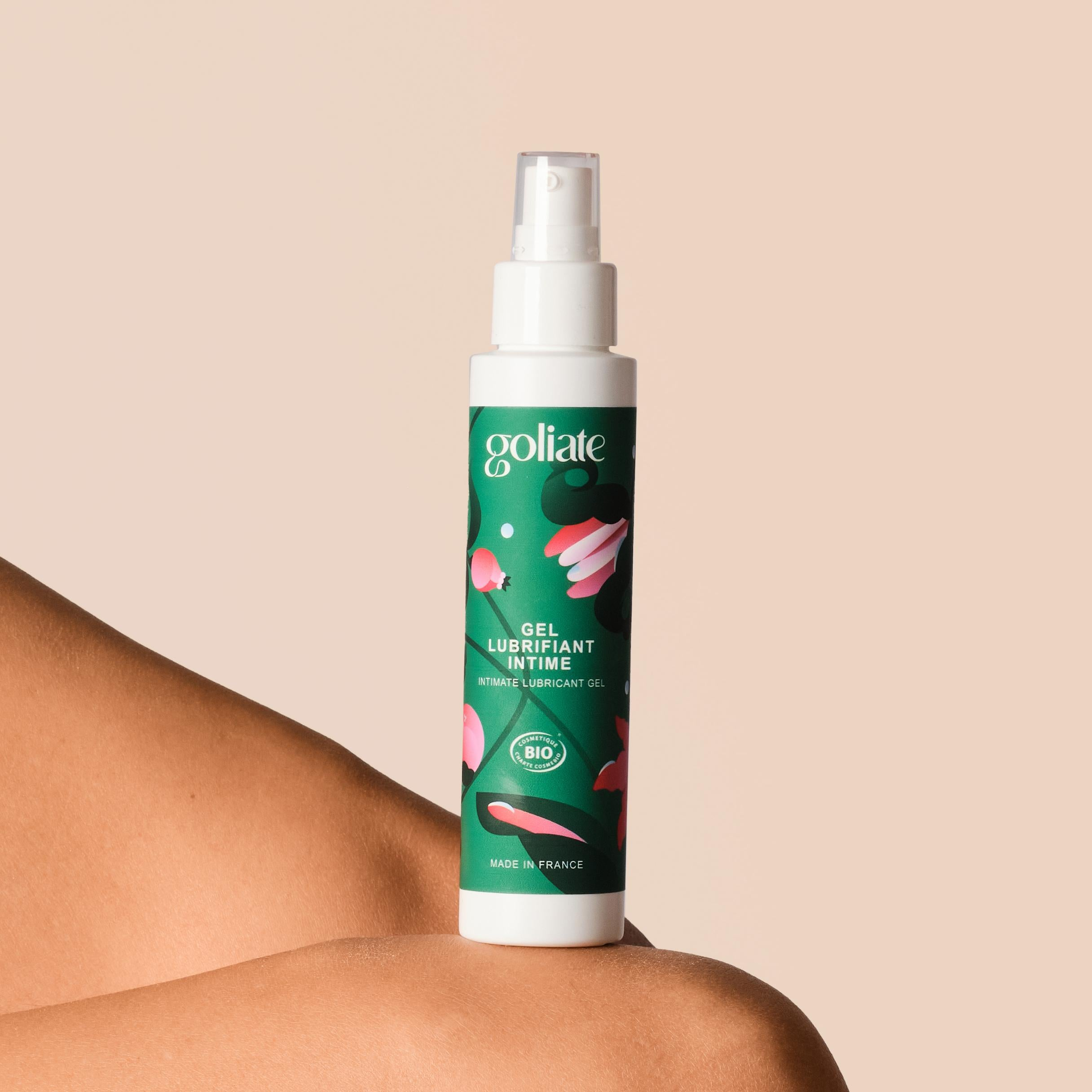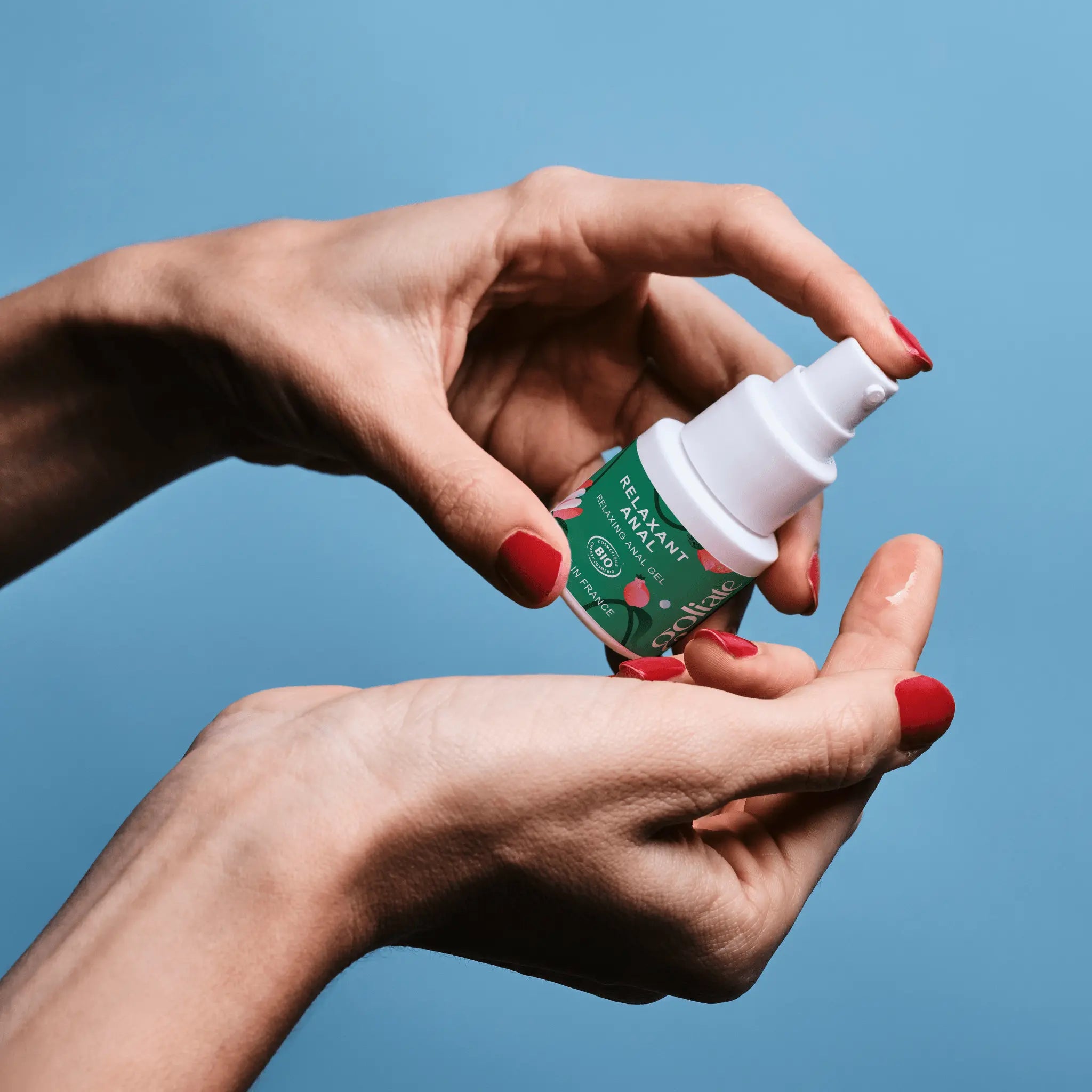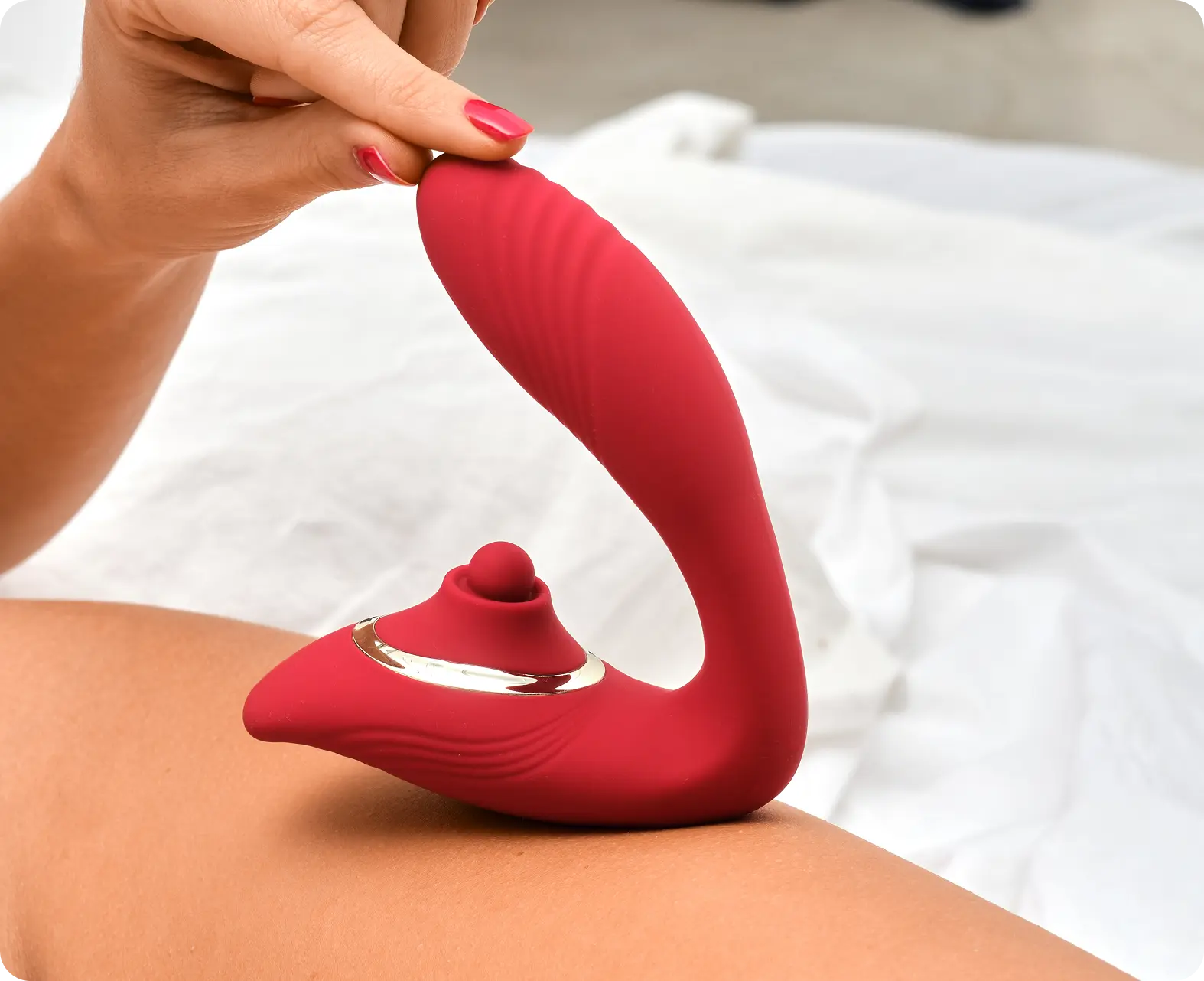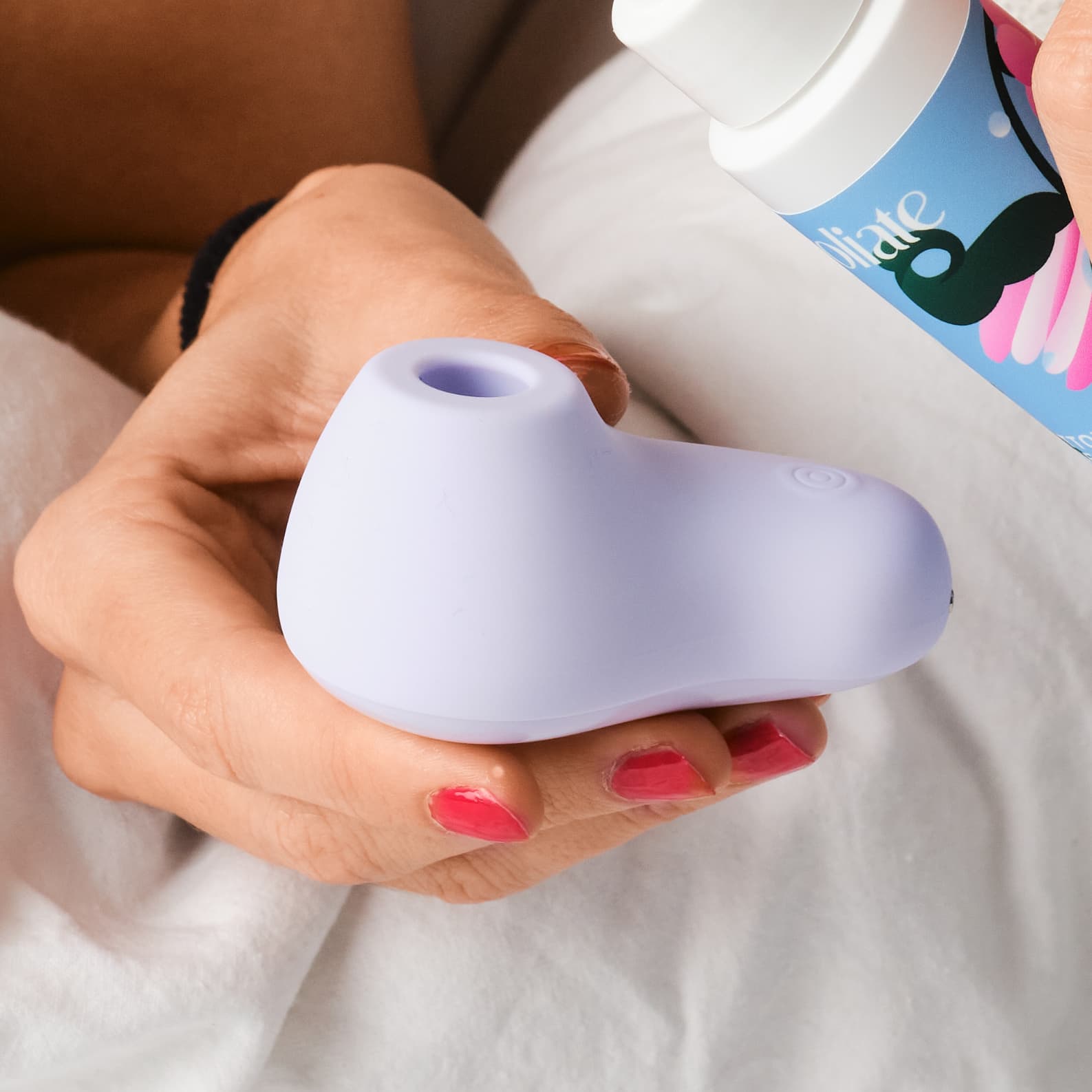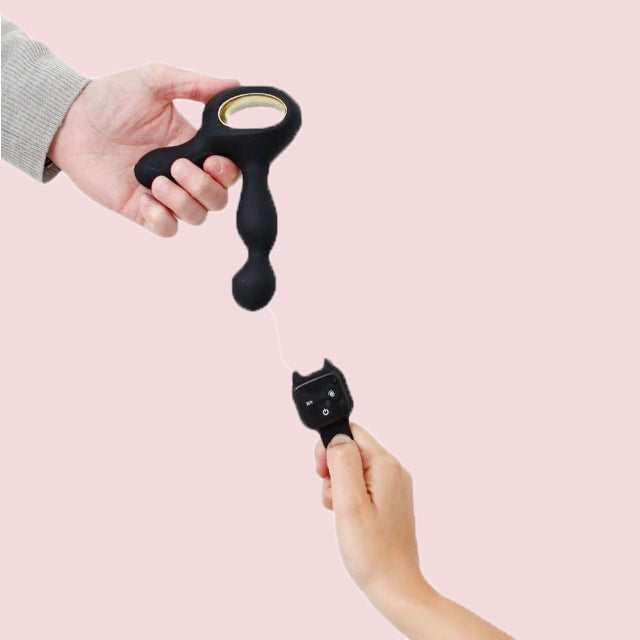The existence of female ejaculation is confirmed with certainty: YES, it is real. However, it often remains a taboo subject. Society has difficulty associating ejaculation with femininity, fueled by the erroneous myth that this emitted liquid is urine, which is absolutely not the case.
It is common for women who ejaculate to feel a sense of shame. So it is essential to demystify this topic. By increasing the collective understanding of female ejaculation , we can pave the way for a more liberating and fulfilling sexual experience for many women.
How does female ejaculation work?
Female ejaculation is defined as the emission of a specific fluid triggered by a particular form of arousal . But what is the source of this mysterious fluid?
The role of the Skene glands
This fluid comes from small glands located between the vagina and the urethra, called Skene's glands or paraurethral glands . Discovered in 1877 by the Scottish-American gynecologist Alexander Skene, they are often referred to as the female prostates . Anatomically, they correspond to the famous G-spot .
What's in this feminine fluid?
Female ejaculate, thick and whitish, is released uncontrollably. Its quantity varies, but generally does not exceed a few milliliters. According to scientific analyses, it shares many characteristics with male semen, with the notable exception of the absence of spermatozoa . Its composition includes:
- Proteins,
- Fructose,
- Carnitine,
- Acid phosphatases.
We can ejaculate and we can also… squirt!
Female ejaculation is often confused with female fountaining . But they are two very distinct phenomena.
The difference between the two phenomena
Most women, especially those with G-spot sensitivity, can release ejaculate after intense arousal . However, the amount can be so small that it often remains unnoticeable.
Conversely, only a few women experience the phenomenon of "fountaining", characterized by an abundant flow of liquid during or after an orgasmic period . This jet can reach up to 150 ml and is distinguished by its continuous flow. In other words, ejaculating does not necessarily mean being a "fountaining woman".
Scientific analysis of the emitted liquid
So far, researchers and gynecologists do not yet know the role of this fluid called squirt.
The nature and origin of the fluid emitted by squirting women remains a subject of study. Analyses reveal that this fluid, called squirt, has no role in reproduction and is purely linked to female pleasure .
It comes mainly from the bladder and its biochemical composition includes:
- Creatinine,
- Urea,
- Uric acid.
It was concluded that squirt is essentially urine, although it is odorless, colorless and tasteless.
What triggers female ejaculation?
Female ejaculation is a complex phenomenon, triggered by a multitude of factors. Primarily, intense sexual arousal can cause a woman to ejaculate. However, achieving such a level of sexual arousal is not an exact science, but rather a complex dance with female pleasure .
Stimulation of the G-spot , an erogenous zone located about 3 cm from the entrance of the vagina, on the stomach side, is often a key factor. This stimulation can elevate pleasure to unprecedented heights.
Other women may experience ejaculation following clitoral stimulation , particularly those who experience clitoral orgasms .
The pathways to female orgasm are as diverse as they are varied, manifesting in the forms of:
- Clitoral,
- Vaginal,
- Or mixed (clitoral and vaginal).
Deep relaxation and mental letting go can also promote ejaculation. In a state of optimal relaxation and well-being, the woman is more inclined to feel sexual pleasure intensely .
In short, the key to experiencing female ejaculation is relaxation and the ability to fully immerse yourself in each sexual sensation.
The secrets behind female ejaculation
There are many misconceptions about female ejaculation . It's time to correct them.
Debunking preconceived ideas
There are many myths surrounding female ejaculation . It's time to dispel them.
- Is ejaculate urine?
Absolutely not. Ejaculate is a fluid similar to male semen , without the sperm. The amount varies from woman to woman, and may be so small that it goes unnoticed.
- Is ejaculation an indicator of female pleasure?
The answer is twofold: yes and no. Female sexuality is so complex that pleasure does not manifest itself uniformly. For some, ejaculation may coincide with ultimate pleasure , and may even occur at the moment of orgasm. However, ejaculating mainly means that the woman is highly aroused.
- Why is ejaculation a source of discomfort?
Ignorance surrounding female pleasure contributes to a negative perception of ejaculation, often wrongly compared to menstrual secretions, breast milk or urine.
Female ejaculation vs orgasm
The terms female ejaculation and female orgasm are not synonymous. Ejaculation does not guarantee the achievement of orgasm. Orgasm depends on a combination of physical pleasure and psychological conditions, such as the absence of stress or anxiety.
Ejaculation, on the other hand, is a biological response to sexual stimulation. In women, it occurs after stimulation of erogenous zones and is particularly common during pleasurable sexual intercourse . It can occur with or without orgasm.
On the other hand, ejaculation is a biological response of the body following stimulation. In men, it can occur:
- after an erection,
- male masturbation,
- an erotic dream.
In women, ejaculation occurs after the erogenous zones are aroused. It occurs mainly during very pleasurable sexual intercourse . After ejaculation, you may or may not have an orgasm.
Am I necessarily a fountain woman if I ejaculate?
It is imperative to grasp the subtle but significant difference between female ejaculation and existence as a squirting woman. The act of ejaculating, in the context of female sexuality, does not automatically categorize a person as a "squirting woman." In the case of female ejaculation, the fluid emitted is the result of a biological process orchestrated by the Skene's glands , distinct and unique in its kind.
In contrast, for a squirting woman, the fluid emitted has its origin in the bladder, consisting mainly of urine. This distinction is supported by scientific studies which have observed that, under the effect of sexual stimulation, the bladder of these women fills quickly, only to empty after the emission of the squirt, thus highlighting the singularity of this phenomenon.
It is worth noting that it is entirely possible to moderate or avoid excessive squirting . A simple but effective practice is to empty the bladder before engaging in sexual intercourse, thus reducing the risk of uncontrolled release of fluid. It is also worth mentioning that stimulation, whether manual or oral, performed by a partner, can play a crucial role in increasing female pleasure .
Where do I start to test?
To determine whether you are experiencing female ejaculation or are actually a squirter, it is advisable to undertake a personal exploration through solitary sexual activities . This introspective process is essential to gain a deeper understanding of how your own body works and its unique reactions.
Start by adopting a variety of relaxation techniques, in order to prepare yourself mentally and physically to fully welcome and feel pleasure. Afterwards, it is crucial to experiment with different methods of sexual stimulation, in order to discover the approaches that resonate most with your preferences and desires.
Using sex toys , especially those designed for G-spot stimulation, such as specially curved vibrators like our little gem , can be particularly revealing. These tools allow you to explore the impact of stimulating this erogenous zone on your body, and to determine whether it triggers female ejaculation or leads you directly to orgasm. Using a female pleasure gel, providing hot or cold sensations, can also enrich the experience, amplifying the sensations and thus increasing the potential for pleasure.

